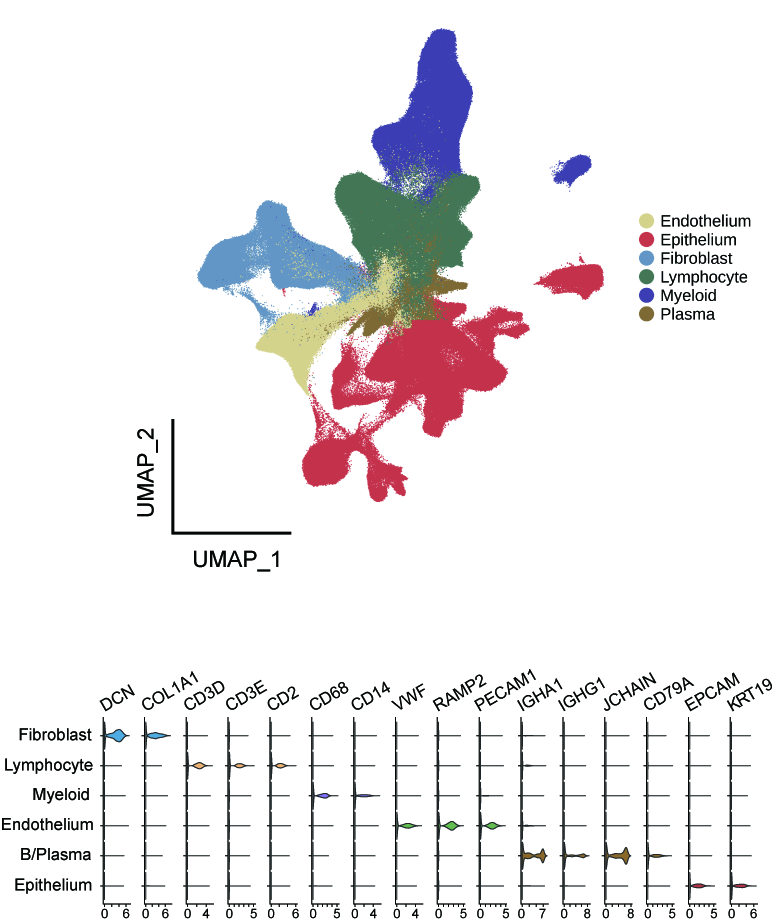Introduction
Abstract
Cancer-associated fibroblasts (CAFs) are the dominant components of tumor microenvironment (TME) and influence cancer hallmarks, but without systematic investigation on their ubiquitous characteristics across different cancer types. Here, we performed pan-cancer analysis on 226 samples across 10 solid cancer types to profile the TME at single-cell resolution, illustrating the commonalities/plasticity of heterogenous CAFs. Activation trajectory of the major CAF types was divided into three states, exhibiting distinct interactions with other TME cell components, and related to prognosis of immunotherapy. Minor CAF components represented the alternative origin from other TME components (e.g., endothelial cells and macrophages) in addition to activation of CAFs. Particularly, the ubiquitous presentation of CAFEndMT, which may interact with proximal SPP1+ tumor-associated macrophages, played a role in angiogenesis and survival stratifications. Our study comprehensively profiled the shared characteristics and dynamics of CAFs, and highlighted their generalized key role in the TME across different cancer types.
Single-cell data analysis has been conducted by Dr. Han Luo at the West China Hospital, Sichuan universtiy. The web application has been developed by Hyunsu An at the Gwangju Institute of Science and Technology under the supervision of Professor JiHwan Park.





